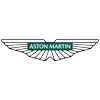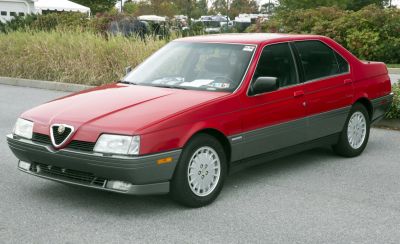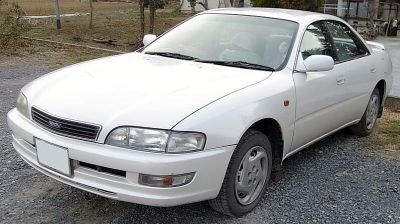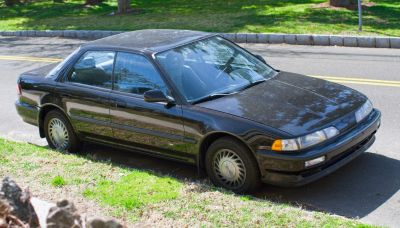 1958 Aston Martin DB4 Dimensions, Size & Specs
1958 Aston Martin DB4 Dimensions, Size & SpecsMeasurements of the 1958 Aston Martin DB4, engineered for optimal performance and comfort
| Dimensions | |
|---|---|
| Length: | 4480 mm176.4 in14.7 ft |
| Width: | 1676 mm66.0 in5.5 ft |
| Height: | 1321 mm52.0 in4.3 ft |
| Ground Clearance: | 177 mm7.0 in0.6 ft |
| Weight Specifications | |
| Curb Weight: | 1308 kg2884 lbs |
The Aston Martin DB4, produced from 1958 to 1963, is a distinguished classic sedan celebrated for both its elegant design and refined engineering. Measuring 4480 mm (176.4 inches) in length, 1676 mm (66 inches) in width, and standing 1321 mm (52 inches) tall, the DB4 presents a compact yet stylish profile typical of late 1950s luxury vehicles. Its curb weight is 1308 kg (2883 lbs), reflecting the balance between a solid build and performance-focused design. The ride height or ground clearance of the DB4 stands at 177 mm (7 inches), offering sufficient road presence while maintaining a sporty driving stance. As an iconic luxury sedan of its era, the DB4’s dimensions showcase Aston Martin’s commitment to crafting vehicles that combine grand touring capability with agile handling characteristics. The blend of classic proportions and lightweight construction makes the DB4 an outstanding specimen in the landscape of mid-20th century automobiles.
Discover the standout features that make the 1958 Aston Martin DB4 a leader in its class
Have a question? Please check our knowledgebase first.
The Aston Martin DB4, produced between 1958 and 1963, measures 4480 mm (176.4 inches) in length, 1676 mm (66 inches) in width, and 1321 mm (52 inches) in height. These compact dimensions reflect its grand tourer status, combining sleek styling with practical road presence. Its size allows it to be agile on winding roads while maintaining a classic sports car stance. Despite being considered a sedan in type, the DB4's dimensions underscore its emphasis on sportiness and elegant proportions.
The Aston Martin DB4 has a curb weight of approximately 1308 kg (2883 lbs). This relatively light weight for a grand tourer of its era contributes to its nimble handling characteristics and responsive acceleration. The lightweight construction stems from the DB4's sophisticated chassis design and materials used at the time, helping it achieve impressive performance standards for the late 1950s and early 1960s. The lower mass enables better fuel efficiency and braking performance, making it an engaging driving experience overall.
The Aston Martin DB4 has a ground clearance, or ride height, of 177 mm (7 inches). This moderate clearance balances sporty low stance aesthetics with practical usability on everyday roads. While low enough to provide excellent aerodynamics and road handling stability, the ride height still allows the DB4 to navigate speed bumps and gentle inclines without excessive risk of scraping. However, drivers should be mindful of rough terrain or steep driveways, as the lowered profile is typical of classic sports cars and may limit off-road capability.
Yes, the Aston Martin DB4, with its length of 4480 mm (176.4 inches) and width of 1676 mm (66 inches), fits comfortably into a standard home garage. Most residential garages can accommodate vehicles up to approximately 5 meters (16.4 feet) in length and around 2.5 meters (8.2 feet) in width, so the DB4 leaves ample space for opening doors and maneuvering around the car. Its relatively compact size by modern standards ensures that owners won’t experience difficulty parking it inside typical residential garages.
The Aston Martin DB4 introduced in 1958 marked a significant evolution in both style and size compared to its predecessors such as the Aston Martin DB2 and DB2/4 models. It was slightly larger and more refined, offering better interior space and grand touring comfort without sacrificing its agile road manners. The DB4's dimensions at 4480 mm length and 1676 mm width were carefully chosen to balance performance and usability, representing a modern interpretation of Aston Martin’s design ethos that paved the way for subsequent models like the iconic DB5.
When compared to similar British and European grand tourers from the late 1950s and early 1960s, such as the Jaguar E-Type and Ferrari 250 GT, the Aston Martin DB4 holds its own with competitive dimensions and weight. For instance, the Jaguar E-Type features a slightly longer length but similar width, while the Ferrari 250 GT is comparable in overall size. The DB4’s curb weight of 1308 kg (2883 lbs) is relatively light due to its advanced engineering, giving it a performance edge and excellent driving dynamics in its class.
The Aston Martin DB4 features a classic coupe body style, often categorized under the sedan type due to its fixed roof and four-seat layout. It typically accommodates four passengers, with two front seats and two smaller rear seats designed for occasional use. This seating arrangement underscores the DB4's grand touring purpose—balancing sporty two-seat driving dynamics with the practicality of carrying additional passengers on longer journeys.
The Aston Martin DB4 was groundbreaking upon its release, featuring a lightweight tubular chassis engineered by Carrozzeria Touring, an Italian design firm known for their Superleggera construction techniques. This chassis contributed significantly to the DB4's agility and performance. It also introduced Aston Martin's new 3.7-liter straight-six engine with triple SU carburetors, providing around 240 horsepower. The combination of innovative design and engineering made the DB4 a benchmark grand tourer and helped define Aston Martin’s direction for future generations.
The Aston Martin DB4 offers a balanced driving experience marked by its manageable size and relatively light curb weight of 1308 kg (2883 lbs). Its compact dimensions allow nimble cornering and precise handling typical of a classic grand tourer. Additionally, its moderate ground clearance of 177 mm (7 inches) ensures practicality for normal road conditions without the harshness of excessively low sports cars. The vehicle’s four-passenger seating and elegant styling also contribute to its practicality as a comfortable weekend touring car with classic British charm.
The Aston Martin DB4’s production span from 1958 to 1963 makes it a highly sought-after classic car today. Its relatively limited production and status as the direct predecessor to the legendary DB5 add to its desirability. Collectors value the DB4 for its iconic design, engineering innovations, and cultural significance during the golden era of British sports cars. Because it was only produced for five years, well-preserved originals are rare, often commanding premium prices in the classic car auction market. Its timeless aesthetics and strong performance credentials further enhance its appeal to enthusiasts and investors alike.
Discover similar sized cars.

| Production: | 1987-1998 |
|---|---|
| Model Year: | 1987 |
| Length: | 4550-4670 mm179.1-183.9 in |
| Width: | 1760 mm69.3 in |
| Height: | 1356-1400 mm53.4-55.1 in |

| Production: | 1988-1998 |
|---|---|
| Model Year: | 1989 |
| Length: | 4485 mm176.6 in |
| Width: | 1690 mm66.5 in |
| Height: | 1315 mm51.8 in |

| Production: | 1989-1998 |
|---|---|
| Model Year: | 1989 |
| Length: | 4505 mm177.4 in |
| Width: | 1690-1740 mm66.5-68.5 in |
| Height: | 1325 mm52.2 in |

| Production: | 1989-1993 |
|---|---|
| Model Year: | 1990 |
| Length: | 4484 mm176.5 in |
| Width: | 1714 mm67.5 in |
| Height: | 1285-1340 mm50.6-52.8 in |

| Production: | 1995-2000 |
|---|---|
| Model Year: | 1995 |
| Length: | 4490 mm176.8 in |
| Width: | 1695 mm66.7 in |
| Height: | 1320 mm52.0 in |
